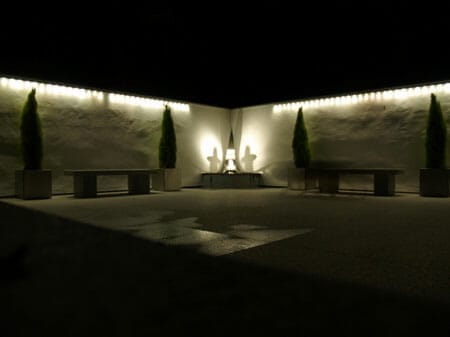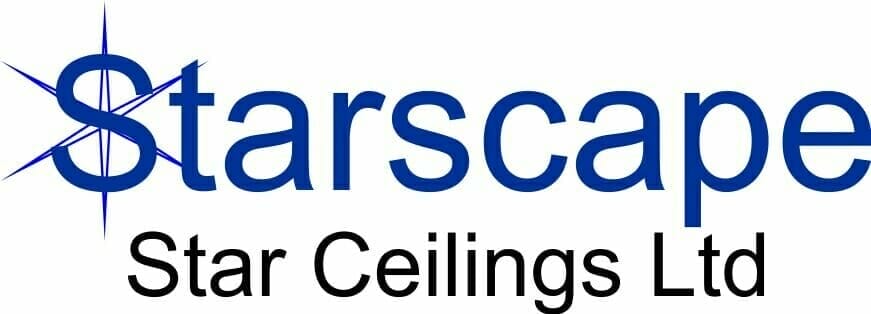In this project in North Wales our customer, Ian, had created a stylish formal garden in which there was a sheltered paved area, with walls on two sides and a couple of water features. He wanted to add some interesting lighting effects to this area, and approached us about creating a colour wash effect on two adjoining walls.
The requirement was to throw light down the surface of a four metre section of each wall. As a secondary feature, Ian was also interested in using the fibre optic light source to illuminate a stainless steel water feature at the corner where the two walls met.

We calculated that a single 150 watt metal halide light source would be just sufficient to supply two four metre light bars and a pair of stainless steel spotlights.
For neatness Ian wanted the tails from the light bars to pass through the wall, run along the back and then emerge behind the stainless steel water feature where he would build a weatherproof enclosure for the light source.
The light bars are made from sections of aluminium trunking, inside which the optical fibre tails run, with clusters of fibre emerging every few cm to form a point of light. The sections of trunking are neatly machine-cut, so the individual 2 metre sections butt together for a fairly seamless joint. The trunking consists of two parts – the main body and a snap-fit lid, and the method of installation was to screw the light and easily-handled lid sections to the wall first. Once these were in place, the main body of each trunking section containing the optical fibres could simply be snapped into position.

The slideshow photographs above show the effects of the light source colour wheel changing. As you can see, some colours are brighter than others, with colours at the blue end of the spectrum generally being less bright than greens, yellows or – of course – the unfiltered white light. The colour and texture of the wall surface are also important considerations. The rate of change in this demonstration is set as part of this webpage, and doesn’t reflect the actual rate of change in the colour wheel of the light source. The light bars can be illuminated by DMX light sources giving a great deal of control over colour change effects.
We think this has worked very well and, more importantly, so does Ian who told us: “I must say that we (and everyone who has seen the lighting) are VERY, VERY impressed!!!”
